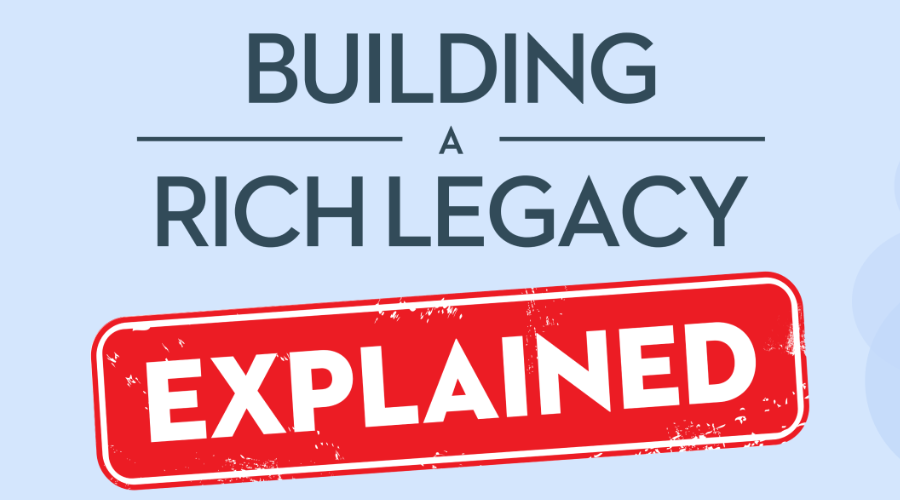As many people know, Retirement is not typically a one-time spontaneous event. It is a journey that is made up of many different phases. The journey begins when you start winding down from work and gearing up for retirement. Then after the big day, it’s about the transition to retired life and finding a new routine so you can enjoy retirement your way.
To begin, we explore how to plan and prepare for the retirement you want.
Stage 1: Gearing up for retirement
You’ve worked hard for decades and the time’s approaching where you can finally retire and enjoy your golden years on your own terms. Although the goal is in sight, the transition from working to retirement can be daunting, so here are some tips to help you prepare for a life of freedom.
Planning retirement your way
Once you retire, you’ll have around 50 extra hours to fill every week. For some people that will be easy, but for others it can be harder to meaningfully fill their time. Now is the time to formulate a plan to help you decide on the type of retirement you want. What will your new sense of purpose be? For many, retirement is a time to relax, indulge in hobbies and spend more time with the grandchildren. For others, retirement is an opportunity to follow a passion – like writing a novel, taking a dream trip or helping a cause that is close to your heart.
Like many other Canadians, you might want to consider “unretirement,” where you begin a completely new career or start your own business. Many Canadians continue working long after “retiring,” to pursue a line of work that they love. Others are taking advantage of the free time that retirement brings to continue their education. The government’s Lifelong Learning Plan (LLP) allows you to make withdrawals from your RRSPs to pay for full-time education for you or your spouse. You can find out more here.
Once you have an idea of how you would like to spend your time in retirement, it’s important to think about how you’ll finance it—and to make sure your funds will last through your golden years.
Creating a post-retirement budget
Thankfully, most retirees have considerably less expenses than when working. They no longer have to pay for commuting costs, work outfits and lunches. And their mortgage is often paid off by now. Making a post-retirement budget will help you to calculate exactly how much you’ll need to finance your dream retirement. As well as listing all of your monthly expenses, include an amount to put aside for your emergency fund. This will be especially important now that you’re on a fixed income. If the total of your costs outweighs your projected income, you may need to trim down your retirement expenses or consider getting a part-time job. Another option is to take out a reverse mortgage, which can help to boost your monthly cash flow.
Deciding on your retirement D-Day
With your retirement plan in order, you can now decide on when you will cash in your RRSPs. Talk to your financial advisor to decide on the best time to convert them into an annuity or RRIF to provide the regular income you’ll need. Now is also a good time to consider when you will start taking the Canada Pension Plan. Although 65 is the usual age for drawing CPP, you can draw on it as early as age 60 (with a 36% reduction) or wait until you hit 70 and get an extra 42%.
Keeping your investments growing
While it may be tempting to keep your retirement savings in safe, fixed income investments like bonds and GICs, the returns are currently low. Dividend-paying stocks are increasingly attractive to retirees, as they boost your investments and provide extra income. Remember, your retirement savings may have to last 20 or even 30 years, so a mix of higher return, higher risk equities and safer, low return fixed income could be a good choice. Your financial advisor can help you decide on the best mixture for you.
Financing retirement your way
Many retirees cite financial independence as a chief concern and if you’ve not saved enough, retirement can be a daunting prospect. If you’re a homeowner, the CHIP Reverse Mortgage® can provide you with either a lump sum or regular payments to supplement your retirement savings so you can retire your way.
The big advantage of the reverse mortgage is that you don’t have to make any regular mortgage payments, so you have considerably improved income. And you get to stay in the home you love.
Stage 2: Making the transition to retired life
In this second phase, we explore how to make the switch from working to retirement.
The leap from fully employed to fully retired is a big one. For many people, it’s a time of excitement at the prospect of complete freedom, but others can feel anxious about this new, unknown life. You’ll suddenly lose the routine you had become accustomed to for so many years and the sense of purpose that came with it. When you combine that with also losing the work-based social life you used to have, the transition to retirement can be quite scary. The good news is, with some preparation, you can make the shift into retirement a smooth one.
Work on being sociable
Losing your office-based social life can be difficult. All of a sudden, you need to make more of an effort to remain social, especially if you are living alone. Nevertheless, it is vital that you maintain and build a network of friends whom you see regularly. Being with others is the best way to stay healthy and happy in your retirement years. It prevents feelings of isolation and can also help fend off dementia. A great way to remain sociable is to join retiree groups in your community and meet up with people in the same phase of life as you. Tip: you can just do an internet search for “retiree social groups” + “your community name” to find some that may be suitable for you.
Family is important – but not everything
It’s important to ensure your social circle is more than just your spouse or partner. Having spent decades seeing each other for only a few hours a day, suddenly spending every single hour together can put a huge strain on your relationship.
Retirement offers the ideal opportunity for you to take up a hobby that you never had the time for during your working life. You could choose one that you can enjoy with your partner, or that you can pursue alone. There are interest groups that cater to a host of hobbies, like gardening, sports, the arts, dancing and acting. It can often be easier to make new friends at these groups, given your shared interests. Try to socialize regularly, even if it’s just an hour a day at a local coffee shop.
Take time to care for your mental health
It may seem strange that your retirement years, your chance to finally focus on yourself, could be an anxious time. However, depression affects up to 15% of Canadian retirees. Thankfully there are some steps that can help prevent this. Adopting a good sleep routine is vital. As we age, our sleep can become more fragmented, which in turn can lead to mental health issues. Try to fall asleep and wake up at the same times every day and try cutting back on caffeine. Reducing your alcohol intake and taking up meditation, yoga and exercise can all improve your mood.
Start up a regular exercise program you can stick to
Apart from maintaining good mental health, exercise has many other benefits. It can be the difference between a full and enjoyable retirement and a frustrating one. Exercise builds up your strength and balance, which helps you stay independent for longer. You’ll have more energy to play with your grandkids. And exercise is proven to prevent diseases like stroke, diabetes and heart disease. It also improves bone density and reduces the risk of osteoporosis and therefore fractures. Plus, it can reduce your chances of developing dementia.
Allow yourself time to adjust
It helps if you accept that it will take time to adapt to your new, retired life. Give yourself time to find a new routine, new interests to fill your day and a new sense of purpose. You could also consider dipping your toes into retirement. Look into the possibility of reducing your current job’s hours to a part-time position or try taking a sabbatical. This will make the transition less abrupt and could also help you decide if now is indeed the time to fully retire.
Transitioning into retirement your way
Most importantly, remember that this is your time. While many people feel anxious when approaching retirement, once they get into a routine, they often find that this is the best time of their life. If you’re worried that finances might prevent you from enjoying the retirement you want, the CHIP Reverse Mortgage could be the ideal solution. It helps to boost your retirement income without you ever having to make regular payments.
Stage 3: Freedom and discovery – finding your new routine
In the third phase, we explore how to find a new routine and the elements of building your retirement identity.
Many people feel a loss of routine when they retire. Suddenly, there is a lot of time to fill where there used to be too few hours in the day. For some, retirement can mean the loss of the identity that came with their profession.
However, retirement offers the opportunity to redefine yourself and do more of what you love; it can potentially be a time to become the person you’ve always wanted to be. Retirement can mean having the time to finally pursue your dreams.
Why routine is important
Building a new routine and identity can make your golden years more fulfilling, fun and more focused on you. A routine can bring practical and psychological advantages:
- We become more productive: our routine becomes automatic and saves us time thinking about what to do next
- We get satisfaction from a job well done and feel valued
- We enjoy learning new things and solving problems
It’s not surprising that many of us don’t want to lose all of this when we retire. It not only makes life continually meaningful, it can also help us to stay feeling relevant.
The benefits of “unretirement”
For many people, retiring brings the perfect opportunity to turn a passion or a hobby into work that they enjoy. This trend of “unretirement” is growing as retirees increasingly want or need to keep working. If you have latent writing skills, you can use your business knowledge to become a contributor for websites focused on your field of expertise. Hobbies like gardening, photography or doing repairs can easily be transformed into a paid job.
Returning to a long-held interest just for fun can also be hugely rewarding. Becoming an amateur artist or singer, for example, will make your retirement more fulfilling and enjoyable. You could also use your skills and years of experience to join boards of directors or political campaigns.
Joining the growing number of entrepreneurs
According to a report by CIBC, entrepreneurs aged 50 and over build a quarter of all new businesses – twice as many as 12 years previously. Canadians are increasingly using the freedom of retirement to enjoy the thrill of running their own business. Starting up your dream business is a great way to supplement your income and keep you engaged with your community. You could also use your business expertise to begin your own consultancy business.
Using your interests for the good of others
Volunteering for a local charity is a great way to give back, meet new people and pursue your passion. For arts lovers, many music festivals, musical companies, theatres and film festivals rely on volunteers for their success. If your interests involve helping others, many hospitals, seniors’ residences and homeless shelters welcome volunteers. Retired business executives and entrepreneurs can also volunteer their time to become mentors to help small businesses grow – find out more here.
Better yourself, better your mind
Learning to play an instrument or speak a foreign language can not only give your retirement more meaning, it can also help improve your mental health and even help offset dementia. If you want to study to further your education or for a degree that you didn’t have time for before, many Canadian universities offer discounted or free tuition to people over 60. Your local university can provide more details. Also, the government’s Lifelong Learning Plan (LLP) allows you to make withdrawals from your RRSPs to pay for full-time education. You can find out more here.
Your new routine and new identity
One big advantage of finding a new routine in retirement is that you don’t have to commit to anything. Unlike during your working years, if you don’t like your new routine, it’s easy to change it. It may take you time to discover the right routine for you and it will likely evolve over time, so why not try something new and see what works best for you. There are many ways the CHIP Reverse Mortgage® could help you to build your dream retirement. It can provide extra funding to help you pick up a new hobby, start a new business or just help you to take on your new identity. Or, it could simply help your retirement savings last longer.
It won’t affect your income—you don’t have to make any regular mortgage payments—but it could help your retirement live up to its potential.
In this fourth and final phase, we look at how to start truly enjoying retirement and how to ensure individuals can retire on their own terms, nobody else’s.
Stage 4: Enjoying retirement your way
When people reach retirement age, they can sometimes feel under pressure from loved ones who worry about their wellbeing.
Financial issues brought about by reduced income can lead to suggestions to sell their home and downsize or even move to a smaller community where their equity and pension will go further.
However, for many people, retirement is the time to make the most of their home and the neighbourhood that they know so well.
In over 30 years of helping Canadians stay in their home while truly enjoying retirement their way, we have come across many reasons for taking out a reverse mortgage. Here are the most common ones:
Not being a financial burden
Maintaining financial independence is a key concern for many retirees. They often find that their post-retirement income is not enough to have the retirement that they really wanted.
The reverse mortgage helps them to increase their income by either providing regular, tax-free payments, or reducing their outgoings by reconciling their debts.
By paying off their mortgage, high interest credit cards, loans and outstanding bills, they can increase their cash flow without help from their family.
Creating a dream home
Many Canadians have lived in their home for decades by the time they retire and renovations are often long overdue. The reverse mortgage helps restore their home to one they love.
For others, the money can help retrofit their home to accommodate increased mobility issues and allow them to live there longer.
There are some who use the money to add a little luxury to their home, by installing a hot tub or even a pool. Others ensure that they can enjoy the outdoors more by building a sunroom or a bigger deck.
An improved standard of living
For many of our customers, their pensions and savings are simply not enough for them to enjoy the standard of living they would like.
By taking out a reverse mortgage, they’re able to take regular vacations, go out for dinner more often and generally enjoy all the things they did when they worked. Many others use it to buy and maintain a reliable car.
Spending more time with family
Being able to help look after grandchildren and watch them grow up can be the most rewarding aspect of having considerably more spare time.
Taking out a reverse mortgage can remove the need to work in retirement, so our customers can spend more of their time with their loved ones. The extra money has also helped them to travel to visit faraway family members or to host family visitors.
Giving family financial help
Rather than waiting to leave an inheritance for their family, many retirees take out a reverse mortgage. This enables them to help family members now, when they really need the money.
Our customers have used the money from their reverse mortgage to help their children to buy a home or help their grandchildren pay for their education or their wedding. It allows our customers to enjoy seeing their family benefit from their money now.
Being able to finally retire
Increasingly, Canadians have to continue working past retirement age to supplement insufficient income.
A reverse mortgage can give them the extra monthly income they need to completely quit work and thoroughly enjoy their retirement.
All this, while staying in the home they love
The last thing our customers want to do is move out of their home. For over 30 years, we’ve helped them to enjoy their golden years, on their terms, while staying put.
For more information about the CHIP Reverse Mortgage and how it could help you truly enjoy retirement your way, call us at 1-866-522-2447.































